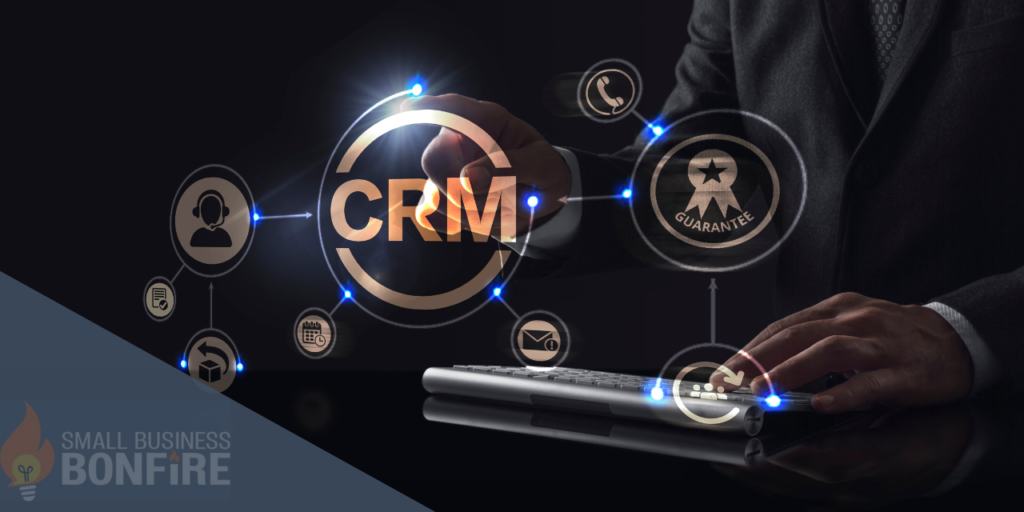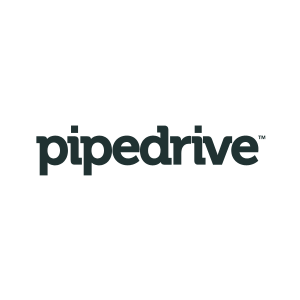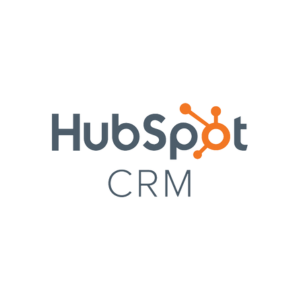
As your small business grows, managing relationships with your customers becomes more challenging.
Not having an understanding of how to properly use customer relationship management (CRM) software can lead to lost opportunities, disorganized customer information, and inefficient sales processes.
I’m AJ, and I’ve used a ton of these tools while growing my digital agency over the last decade.
After a successful exit with the agency, I started Small Business Bonfire with the mission to empower fellow small business owners and entrepreneurs to achieve their full potential.
My team and I created this guide to make sure you have all the information you need to set up and use a CRM for your small business.
Let’s dig in!
Once you’re done reading, check out our guide to the best CRMs for small businesses!
Key Takeaways
-
CRMs can help small businesses streamline and automate customer management activities. -
It is important to select the right one for your business needs to get the most benefit from it. -
Make sure you understand how a CRM works, who will be using it, and that all data is properly entered into the system. -
Leverage the automation and reporting capabilities of a CRM to increase efficiency and make smarter decisions.
SBB Featured Partners
What Does CRM Stand For?
CRM stands for Customer Relationship Management, which is essentially a way of managing interactions with your customers in a more organized and effective manner.
Think of it like a personal assistant who helps you keep track of all your important appointments, contacts, and tasks. Just like a personal assistant, a CRM platform can help you stay on top of your game and ensure that you never forget an important client meeting or follow-up task.
So if you want to take your business to the next level and impress your clients with your superhuman organization skills, it’s time to get on board with a CRM platform.
How to Use a CRM System
Using a CRM platform is simple and straightforward, but it does require some setup on your end.
We’ll go through in-depth on exactly how to do this below.
Here are some helpful steps to follow:
- Upload your contacts
- Add your salespeople
- Customize your settings
- Train your staff
- Integrate any third-party tools
- Set up all dashboards
- Enable reports
It may seem daunting at first, especially if you’re completely new to CRMs, but don’t worry; it gets easier the more you use them.
Upload Your Contacts
You’ll first need to upload all the contacts from your address book and other sources into your CRM.
This is a crucial step as it will ensure that all of your contacts are properly organized in one place.
If you’re a startup that doesn’t have a ton of contacts, you can always start from scratch and add contacts manually into the CRM.
The most important thing is that you have all of your data in one place.
Adding Your Salespeople
Once you’ve uploaded all your contacts, it’s time to add your salespeople to the system.
Your sales team is responsible for managing the relationships with your customers, so it’s important to ensure that they are properly trained and have access to all of the customer data.
Your CRM software should be set up in such a way that each salesperson has their own contacts assigned to them, as well as any other tasks associated with those contacts.
Customize Your Settings
Now that everything is uploaded, it’s time to customize your settings in order to make sure you’re getting the most out of your CRM.
Depending on the specific software you’re using, there are usually a variety of settings and preferences that can be tweaked to best suit your needs.
Some of these include the following:
- Customizing your sales pipeline
- Creating custom fields for contact information
- Setting up notifications
- Automate tasks
Some of these will take a bit more time and effort to set up, but once you get the hang of it, you’ll be glad you did!
Train Your Staff
This step is crucial, in our opinion. Having everyone on the same page can make all the difference in how well a business functions.
You want to ensure that your staff is properly trained on how to use the system and that they understand why it’s important for them to do so.
Having regular training sessions with your team can help make sure everyone stays up to date on your current business processes.
We can’t stress enough how important having a well-trained team is.
Integrate Any Third Party Tools
Most CRMs offer at least some ability to integrate third-party tools such as workflow and project management solutions, messaging apps, and data management programs.
The better platforms (in our opinion) offer integration with popular apps such as the following:
- Slack
- MailChimp
- Google Calendar
- Asana
- Zapier
- Trello
This can help streamline your workflow and increase efficiency across the board. Plus, it’s much easier to manage when all your data is in one place.
We use Slack and Trello for everything, and being able to integrate them into our CRM has helped us a ton.
Set Up All Dashboards
Your CRM should have a couple of different dashboards that you can set up, depending on the type of business you run.
For instance, if you’re managing multiple teams with different tasks and responsibilities, having separate dashboards for each team can make it easier to track progress and stay organized.
Some dashboard types include:
- Sales Dashboard – provides an overview of sales activities and progress
- Customer Dashboard – gives you a view of customer interactions, data, and behavior
- Project Dashboard – gives you a snapshot of all the projects in your CRM
You should also consider setting up an overall dashboard for your company, giving you a high-level view of all the tasks and activities in your CRM.
Enable Reports
Finally, you’ll want to enable reports in order to track the effectiveness of your CRM.
This will allow you to quickly identify any areas that need improvement or where you’re excelling and can focus more on those areas.
Some analytics to track include:
- Sales performance – what is the success rate of your sales team?
- Customer retention – how effective are you at retaining customers?
- Productivity – track productivity across teams and individuals
- Lead conversion rates – measure how well leads are converted into paying customers
By tracking these metrics, you’ll be able to get a good understanding of how well your CRM is working and what needs to be improved.
By following all these steps, you’ll be well on your way to becoming a pro at using a CRM system for your small business.
Benefits of CRM Software
Now that we’ve gone over how to use a CRM let’s get into the (many) benefits.
Some major benefits of using a CRM include:
- Better Customer Experience
- Higher Employee Productivity
- Increased Team Collaboration
- Better Customer Relationships
- Greater Customer Insights
Better Customer Experience
This one seems like a no-brainer, right?
Having a CRM system in place gives you the ability to better serve your customers. By having access to their data and interactions with your business, you’re able to provide them with personalized experiences that will make them feel valued and appreciated.
Certain CRMs we’ve used provide useful features such as chat automation, which lets you automate common customer service tasks. This can save your team time and provide a better experience for customers.
Higher Employee Productivity
Your employees are the backbone of your business, and if they’re not productive, you won’t be successful.
CRMs are great tools for increasing employee productivity because they help with the following:
- Organizing data – CRM systems allow you to store and organize all your customer data in one place. This saves time hunting for information and helps employees make quicker decisions
- Automating tasks – Automation features help employees focus on what’s important instead of mundane, repetitive tasks
- Tracking progress – Easy-to-read reports help employees stay on track and make sure they’re meeting their goals
By utilizing the features of a CRM, we predict that your team’s productivity will increase significantly.
Increased Team Collaboration
CRM implementation can make it so your entire team can access customer data and collaborate on tasks in real time.
This makes it easy for teams to stay connected and coordinated, which in turn leads to better customer experience and increased employee productivity.
Without good customer relations management, it’s easy for teams to miss out on key insights or get lost in the shuffle.
Better Customer Relationships
As we’ve discussed, having a CRM helps you build stronger relationships with customers by providing you with the data and insights to better serve them.
For example, some CRMs have features such as customer segmentation, which allows you to easily organize your customers into specific categories or segments. This makes targeting specific groups of customers much easier and more effective.
Some ways that CRM software can help you build stronger customer relationships are:
- Providing personalized recommendations – use data to create tailored product or service recommendations for customers
- Building loyalty programs – reward repeat customers and increase brand loyalty
- Creating custom campaigns – develop targeted campaigns based on customer preferences and purchase history
Greater Customer Insights
In the same way that a CRM can help you maintain a better relationship with your customers, it can also provide valuable insights into how your business is performing.
By tracking key metrics such as open rates, conversion rates, and customer lifetime value (CLV), you’ll be able to get a better understanding of how successful your business is at turning leads into paying customers.
This data can then be used to develop strategies for improving customer service and increasing revenue.
Think of it like this: a CRM helps you to see the “big picture” of your business and allows you to make decisions that are informed by customer data.
Key CRM Terms
We’ve gone over some ways using a CRM can benefit your business. Now let’s go over some key terminology to help you make the most out of your CRM software.
Here are some terms we’ll discuss:
- Contacts
- Lead
- Deal
- Company
- Source
- Activity
- Deal Stage
- Pipeline
Contacts
Contacts are essentially the people in your database. They can be customers, potential customers, or leads.
The contact record stores information about each individual, such as their name, email address, and other key data points.
Lead
Leads are individuals or organizations who have shown an interest in your product or service.
A lead can be a customer who has made a purchase before but is not yet a loyal customer or someone who has filled out a contact form on your website.
When your sales team captures leads, you’ll need to keep track of their activity and determine if they’re qualified to be converted into a customer.
One way CRMs can help with this process is by offering lead scoring. This means that each contact is given a number based on their activity and engagement with your business.
Deal
Your deals are basically the same as sales opportunities.
They represent a potential sale and usually include information such as:
- Customer contact details
- Product or service details
- Any other relevant data
By using this data to segment your deals, you’ll be able to track their progress and see which ones are likely to close.
Company
Companies are essentially organizations that a contact or lead is associated with.
For instance, if you have multiple contacts from the same organization, they’ll all be linked to one company record.
This makes it easier for your sales team to track opportunities and interactions with each organization.
Source
Source just refers to where a contact or lead comes from.
For instance, if they filled out a form on your website, then the source would be “website.” Or if they were referred by another customer, the source would be “referral.”
Activity
Activity is simply a record of interactions that your sales team has with their contacts or leads.
This could be emails, phone calls, meetings, etc.
It also includes any tasks that your team needs to do with each contact.
Any customer relationship management software worth its salt should have an activity feature that allows sales reps to easily track and monitor their interactions with prospects.
Deal Stage
The deal stage refers to the progress of a potential sale.
Every deal goes through several stages, from initial contact to closed-won, and each stage should be tracked in your CRM.
This helps you understand how long deals take to close and which sales activities are most effective.
Pipeline
The pipeline is the collective term for all of your current deals.
This allows you to easily see which deals are in progress, which ones have been won or lost, and how quickly your sales team is moving deals through the funnel.
By tracking this data over time, you can make better decisions about where and how to allocate your resources for maximum efficiency.
Typically, most CRMs allow multiple ways to view your pipeline, such as a list view or Kanban board.
Best CRMs for Small Businesses
Now that we’ve covered the jargon, let’s talk about the best CRM software to help you get started.
These are some of our favorite software for small and midsize businesses:
- Monday.com
- HubSpot
- Pipedrive
- Less Annoying CRM
Monday.com
Monday.com has it all. It’s essentially several products in one.
These include:
- Monday Dev
- Monday Projects
- Monday Sales CRM
- Monday Work Management
- Monday Marketer
Each one has its own capabilities and features, but the CRM stands out for its intuitive interface and visual drag-and-drop pipeline in particular.
With all of these robust features, you’d think the price tag would be hefty, but Monday.com is actually one of the most affordable options out there for small business owners (starting at $8/month).
HubSpot
Speaking of robust CRM platforms, HubSpot CRM is essentially an entire suite of hubs designed to help you manage all the different aspects of your customer relationships.
For instance, the Sales Hub can help you track leads and close deals faster, while the Service Hub offers support tools like chatbots and ticketing systems.
Here are the Hubs offered by HubSpot:
- Service Hub
- Sales Hub
- Marketing Hub
- CMS Hub
- Operations Hub
Each of these hubs has its own separate CRM tools and capabilities that come together to form one of the most powerful CRMs in the game, in our opinion.
What’s even better is that HubSpot offers a free plan across the board, allowing small businesses to utilize the platform without spending any money.
However, it’s worth noting that if it’s within your budget, the Enterprise Suite plan provides some pretty incredible return on investment (ROI).
This is especially true for HubSpot’s marketing hub, which offers incredible marketing features such as:
- Email marketing campaigns
- Marketing automation
- Ad campaign tracking
- Social media integration
Pipedrive
If you’re looking for a more streamlined platform with a focus on pipeline management, then Pipedrive is worth looking into.
This CRM emphasizes the importance of tracking each step in the sales process and provides an easy-to-use visual interface to do so.
What really sets Pipedrive apart is its task automation features that allow you to create custom workflows for specific customers or projects.
Plus, you get access to tons of integrations like Zapier and Gmail that are designed to help streamline your workflow and maximize efficiency.
Less Annoying CRM
Last but not least is Less Annoying CRM — a self-proclaimed “simple yet powerful” software that lives up to its name.
It doesn’t have the same bells and whistles as some of the other platforms on this list, but it does offer everything necessary for tracking customer data, such as contacts, tasks, deals, and notes.
Plus, you get access to helpful features like custom views and detailed reporting tools.
The user interface is one of our favorite features, as it’s designed with first-time users in mind.
The pricing is also fairly reasonable at just $15/month (per user), and there’s no limit to the number of contacts you can import into the platform.
Final Thoughts
Alright, you’ve made it to the end!
By now, you should have a better understanding of how to use a CRM and which platform is best for your small business.
Whichever software you decide to go with, keep in mind that the most important thing is choosing one that fits your budget and works well with your existing processes.
Do you have any questions about CRMs? Let us know in the comments below!
FAQs about topic
The five steps in the CRM process are:
- Identify customer needs and preferences
- Collect customer journey data
- Analyze customer data to gain insights
- Develop a strategy for engaging customers based on those insights
- Implement the strategy by leveraging technology, tools, and processes
The 7 C’s of CRM are:
- 1. Customer knowledge – Knowing your customers and their needs.
- 2. Collaboration – Working together with colleagues to deliver a great customer experience.
- 3. Communication – Communicating effectively with both internal stakeholders and customers.
- 4. Content – Delivering content that is tailored to the customer’s individual needs.
- 5. Commerce – Offering a seamless buying experience for customers.
- 6. Community – Building relationships with customers through social media and other channels.
- 7. Culture – Creating an environment of collaboration, innovation, and customer centricity within your organization.
The three types of CRM are operational, analytical, and collaborative. Operational CRM focuses on managing the day-to-day processes related to customer interactions, such as sales, marketing, and service. Analytical CRM uses data from various sources to gain insights into customer behavior and preferences. Collaborative CRM involves leveraging technology and tools to foster open communication between customers and internal stakeholders. There are also subcategories, such as a marketing CRM or sales CRM.
The most popular CRM software among small businesses is Salesforce, followed by Zoho, HubSpot, Insightly, and Microsoft Dynamics 365. Each of these platforms offers a variety of features and tools designed to help you with time management, contact management, empowering your marketing team, and tracking each customer’s journey.
Sales teams can benefit from customer relationship management by having a centralized database that provides an overview of each customer’s activities, preferences, and needs.
This data can be used to create tailored strategies for engaging customers and delivering the best possible experience. Additionally, it helps sales teams stay organized and prioritize tasks more efficiently.
Yes, a good CRM strategy can help sales managers effectively manage current and prospective customers, prioritize lead management, and keep all the data in one place effectively.
{“@context”:”https:\/\/schema.org”,”@type”:”FAQPage”,”mainEntity”:[{“@type”:”Question”,”name”:”What are the five 5 steps in the CRM process?”,”acceptedAnswer”:{“@type”:”Answer”,”text”:”
The five steps in the CRM process are:
- Identify customer needs and preferences
- Collect customer journey data
- Analyze customer data to gain insights
- Develop a strategy for engaging customers based on those insights
- Implement the strategy by leveraging technology, tools, and processes”}},{“@type”:”Question”,”name”:”What are the 7 C’s of CRM?”,”acceptedAnswer”:{“@type”:”Answer”,”text”:”
The 7 C’s of CRM are:
- 1. Customer knowledge \u2013 Knowing your customers and their needs.
- 2. Collaboration \u2013 Working together with colleagues to deliver a great customer experience.
- 3. Communication \u2013 Communicating effectively with both internal stakeholders and customers.
- 4. Content \u2013 Delivering content that is tailored to the customer’s individual needs.
- 5. Commerce \u2013 Offering a seamless buying experience for customers.
- 6. Community \u2013 Building relationships with customers through social media and other channels.
- 7. Culture \u2013 Creating an environment of collaboration, innovation, and customer centricity within your organization.”}},{“@type”:”Question”,”name”:”What are the 3 types of CRM?”,”acceptedAnswer”:{“@type”:”Answer”,”text”:”
The three types of CRM are operational, analytical, and collaborative. Operational CRM focuses on managing the day-to-day processes related to customer interactions, such as sales, marketing, and service. Analytical CRM uses data from various sources to gain insights into customer behavior and preferences. Collaborative CRM involves leveraging technology and tools to foster open communication between customers and internal stakeholders. There are also subcategories, such as a marketing CRM or sales CRM.”}},{“@type”:”Question”,”name”:”What is the most popular CRM software?”,”acceptedAnswer”:{“@type”:”Answer”,”text”:”
The most popular CRM software among small businesses is Salesforce, followed by Zoho, HubSpot, Insightly, and Microsoft Dynamics 365. Each of these platforms offers a variety of features and tools designed to help you with time management, contact management, empowering your marketing team, and tracking each customer’s journey.”}},{“@type”:”Question”,”name”:”How can sales teams benefit from customer relationship management?”,”acceptedAnswer”:{“@type”:”Answer”,”text”:”
\u00a0Sales teams can benefit from customer relationship management by having a centralized database that provides an overview of each customer’s activities, preferences, and needs.
This data can be used to create tailored strategies for engaging customers and delivering the best possible experience. Additionally, it helps sales teams stay organized and prioritize tasks more efficiently.”}},{“@type”:”Question”,”name”:”Can a CRM strategy help with Sales Management?”,”acceptedAnswer”:{“@type”:”Answer”,”text”:”
Yes, a good CRM strategy can help sales managers effectively manage current and prospective customers, prioritize lead management, and keep all the data in one place effectively.”}}]}
The post How to Use a CRM: Ultimate Guide for SMBs appeared first on Small Business Bonfire.




